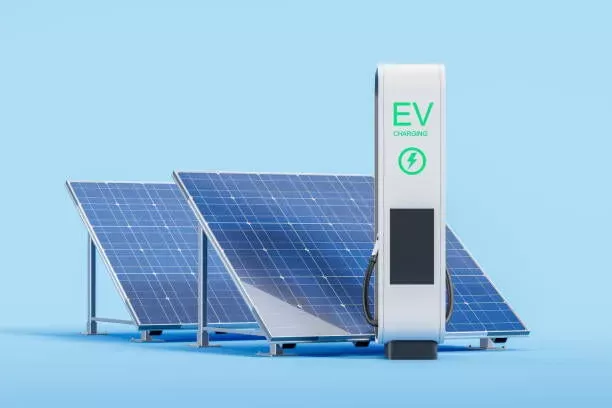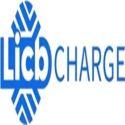Notifications

7 minutes, 9 seconds
-31 Views 0 Comments 0 Likes 0 Reviews

Introduction: Powering the Future with the Sun
As a leading EV chargers manufacturer in China, LiCB Charge delivers reliable AC and DC electric vehicle charging stations along with comprehensive charging solutions.
As the world accelerates its shift toward clean energy, the fusion of solar power and electric vehicles (EVs) is reshaping modern transportation. Solar EV charging — using solar energy to power electric cars — offers a compelling blend of emission-free driving and renewable energy generation. With global EV adoption on the rise and mounting climate concerns, solar charging is becoming a key pillar in the journey toward net-zero carbon emissions.
This solution not only slashes greenhouse gas emissions and reduces reliance on fossil fuels but also delivers long-term cost savings. But how does solar EV charging actually work — and what should EV owners know to make the most of it at home?
What is Solar EV Charging?
Solar EV charging, also known as photovoltaic (PV) charging, involves converting sunlight into electricity via solar panels and using it to charge an electric vehicle. It combines two clean technologies — solar energy and electric mobility — into a unified, eco-conscious system.
A typical setup includes rooftop or ground-mounted solar panels, a home energy system, and an EV charger. During daylight, solar power can directly charge your vehicle or be stored in a battery for nighttime use. This approach reduces your carbon footprint and insulates you from volatile energy prices.
Charging Your EV at Home with Solar Energy
Home-based solar charging is increasingly practical and affordable. Its efficiency depends on several factors:
Solar System Size
Residential systems typically range from 5 kW to 15 kW. Larger systems can meet both home energy needs and EV charging demands.
Charger Type
Level 1 chargers (2 kW) are slow, taking over 24 hours for a full charge. Level 2 chargers (7–22 kW) are much faster and align better with solar production during the day.
Daylight and Weather
Solar output peaks around midday and drops on cloudy days. A battery storage system can bridge gaps, enabling charging at night or during low production.
EV Battery Size and Usage
Charging needs depend on your battery’s capacity and driving habits. Frequent long-distance travel demands more energy than short daily commutes.
Smart Charging Technology
Smart chargers optimize when and how your vehicle charges, using solar surplus when available and avoiding expensive grid power.
Matching Solar Output to EV Needs
Consider this: a 7 kW solar system can produce 28–35 kWh on a sunny day — enough to power an EV for roughly 90–110 miles. However, since homes also consume energy, actual charging availability may vary. To optimize efficiency, balance solar generation with household and EV needs, and consider a battery system to store excess energy.
Cost Benefits of Solar EV Charging
One of the strongest incentives for solar EV charging is long-term savings. Grid-based EV charging costs around $66/month on average in the U.S., and significantly more if using public charging stations.
By contrast, solar systems allow you to lock in energy rates for 20–25 years — their typical lifespan. While the upfront investment may be high, available tax credits and incentives often reduce the payback period significantly.
Maximizing Savings with Smart Charging & TOU Rates
Many utilities use Time-of-Use (TOU) pricing, with cheaper electricity during off-peak hours. Smart chargers and solar systems can charge your EV during high solar output or low-rate periods. Advanced systems even offer vehicle-to-home (V2H) or vehicle-to-grid (V2G) functionality, where your EV powers your home or contributes energy back to the grid.
Environmental Impact: Cleaner Driving
Gas-powered vehicles emit about 4.6 metric tons of CO₂ annually. Switching to an EV cuts this dramatically — and using solar power to charge reduces it further, eliminating emissions during charging entirely. Solar EV charging is one of the most effective ways individuals can contribute to climate goals.
Challenges of Solar EV Charging
While promising, solar EV charging does come with a few challenges:
Upfront Costs: Equipment and installation can be expensive, but government incentives like the U.S. Federal Solar Investment Tax Credit (ITC) help offset costs.
Intermittency: Solar generation is weather- and daylight-dependent. Battery storage ensures reliability.
System Complexity: Proper sizing and integration require expertise. Working with a qualified installer is key.
The Future of Solar EV Charging
As technology evolves and adoption grows, solar EV charging is set to become mainstream. Innovations like solar carports, portable charging units, and bidirectional charging will offer greater flexibility. Smart grids and real-time energy management will further optimize how we power vehicles and homes.
Governments worldwide are backing this transition with subsidies, infrastructure investments, and supportive policies — making it easier for individuals and businesses to embrace solar-powered mobility.
Conclusion: A Smart, Sustainable Investment
Solar EV charging is more than just a trend — it's a forward-looking investment in clean transportation and energy independence. By tapping into the sun's limitless power, EV owners can lower costs, cut emissions, and help build a greener future.
Whether you're outfitting your home with solar panels or upgrading to a smart charger, embracing solar EV charging is a step toward a cleaner, smarter, and more sustainable world.Know more about Google SEO Directory
China EV Chargers EV Charger Manufacturer Smart EV Chargers Electric Car Chargers Electric Vehicle Chargers Electric Car Charging Stations

